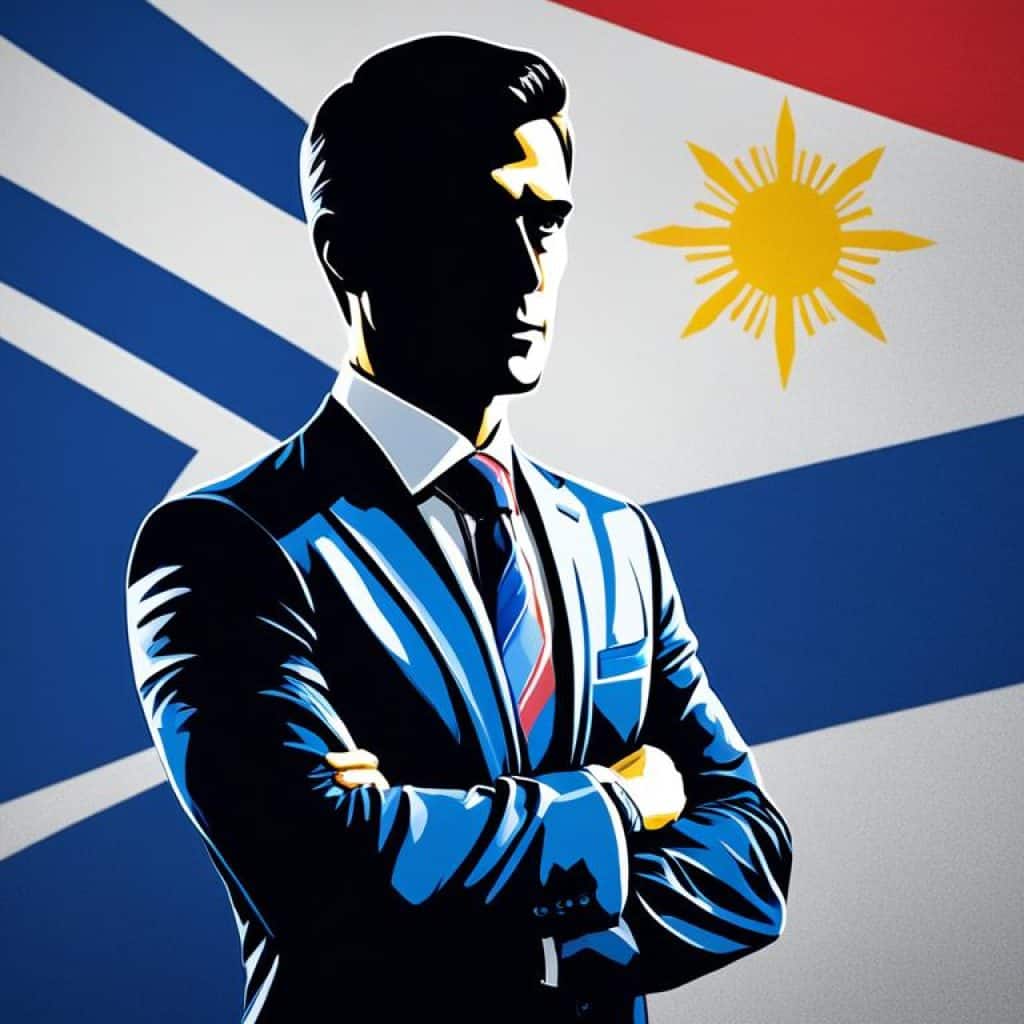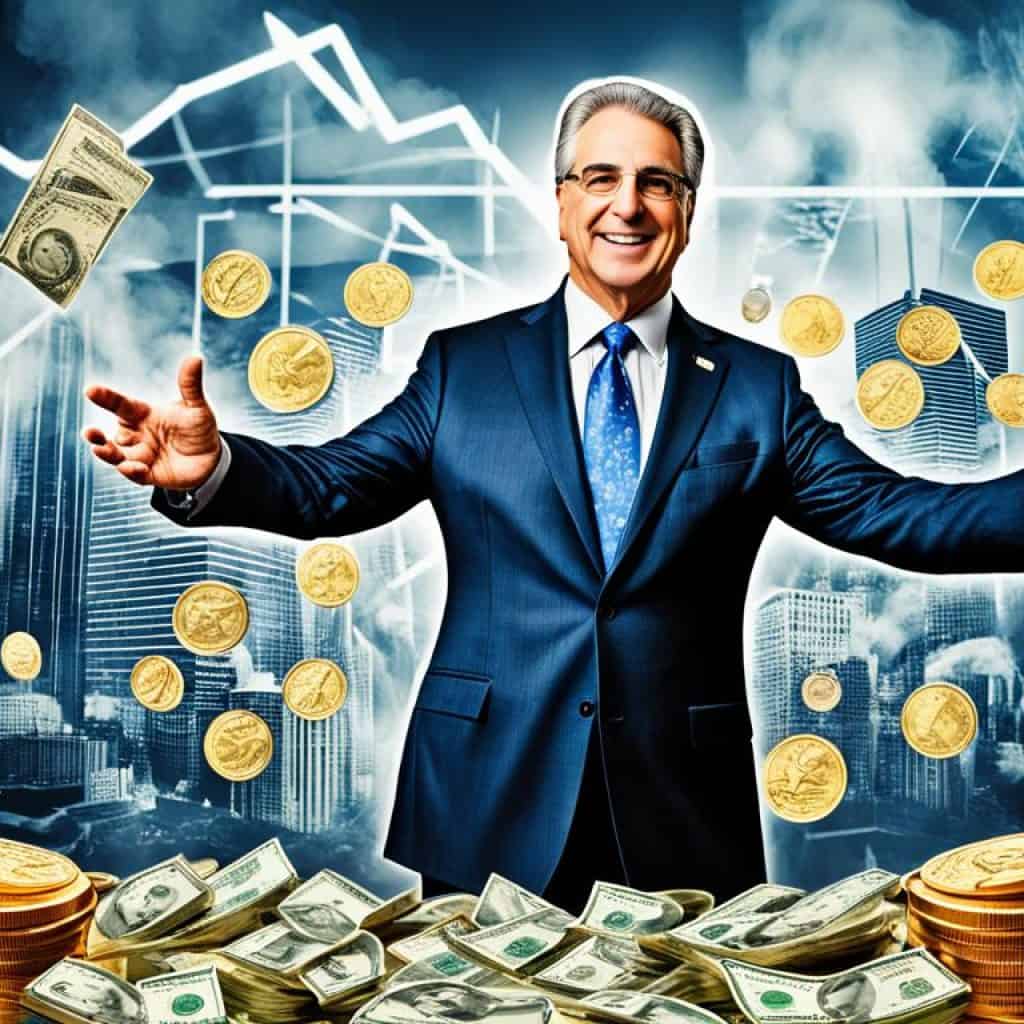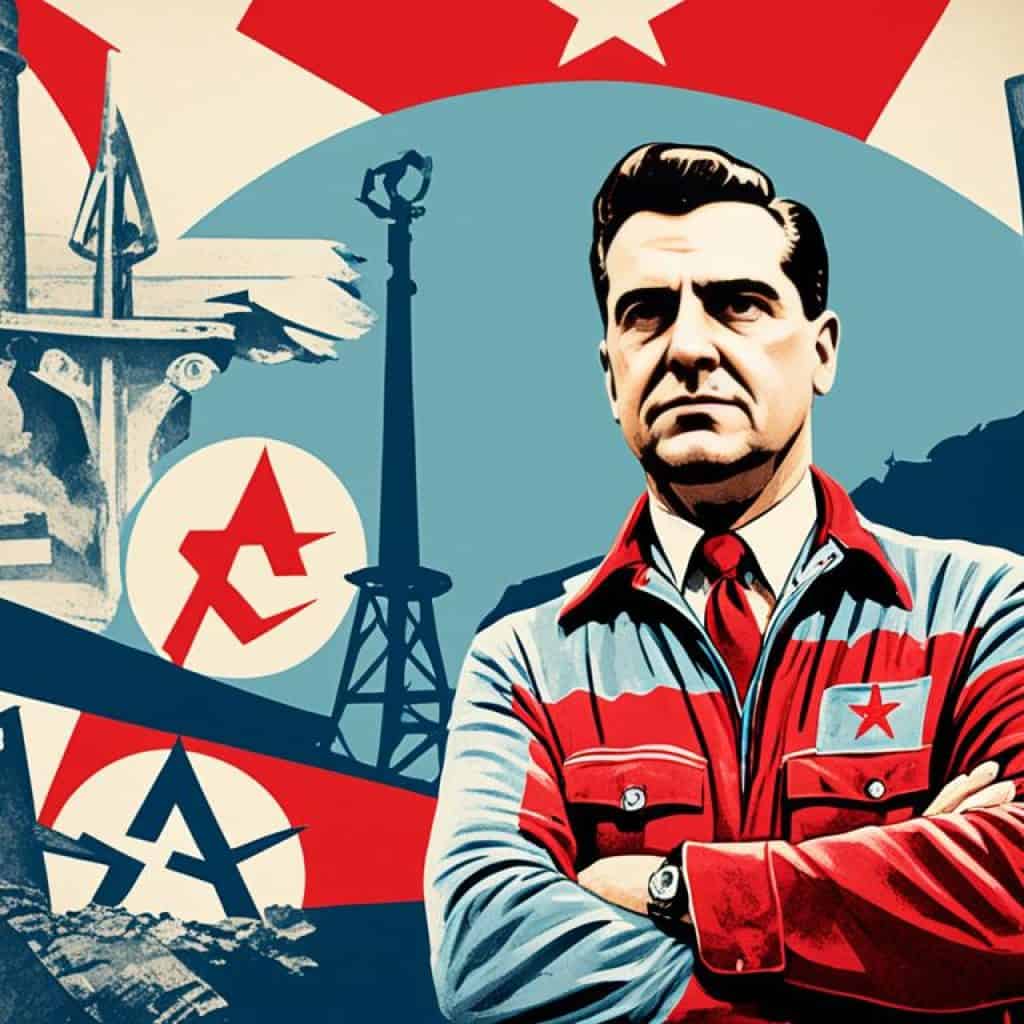Did you know that Carlos P. Garcia, the 8th President of the Philippines, played a vital role in shaping the nation’s history during the 1950s? As a prominent Filipino leader, Garcia implemented economic policies, strengthened diplomatic relations, and promoted anti-communism. But do you know the details of his administration and the impact he had on the country? Join us as we explore the key facts about the presidency of Carlos P. Garcia and delve into the accomplishments and challenges of his time in office.
Key Takeaways:
- Carlos P. Garcia served as the 8th President of the Philippines from 1957 to 1961, following the presidency of Ramon Magsaysay.
- During his presidency, Garcia focused on economic policies to improve the country’s economy and strengthen diplomatic relations with other nations.
- He actively promoted anti-communism and played a key role in negotiating the transfer of United States military base areas to Philippine control.
- Garcia’s administration witnessed significant economic growth, with increases in GDP, per capita income, and total exports.
- His legacy includes his contributions as a statesman, his work in economic and diplomatic spheres, and his recognition as a poet in his native dialect, Visayan.
Early Life and Education
Carlos P. Garcia, a prominent Filipino leader, was born in Talibon, Bohol, Philippines, on November 4, 1896. He began his educational journey in Talibon, where he received his primary education. Later, Garcia attended the esteemed Cebu Provincial High School to further enhance his knowledge.
Determined to pursue higher education, Garcia enrolled at Silliman University in Dumaguete. During his time there, he honed his intellectual abilities and developed a deep passion for learning. After completing his undergraduate studies, Garcia’s thirst for knowledge led him to the prestigious Philippine Law School, where he immersed himself in legal studies.
Garcia’s hard work and dedication paid off when he graduated with a law degree in 1923, marking the beginning of his illustrious career as a lawyer. With his comprehensive education and commitment to excellence, Carlos P. Garcia emerged as a highly respected figure in the legal field.
Political Career
Carlos P. Garcia embarked on his political journey in 1925, securing a seat in the Philippine House of Representatives as the representative of Bohol’s third district. His tireless dedication to public service led him to be appointed as the governor of Bohol from 1933 to 1941. However, his political aspirations were momentarily interrupted by the Japanese occupation during World War II.
Undeterred by the challenges imposed by the Japanese, Garcia joined guerrilla forces and actively resisted the occupation. He exemplified immense courage and resilience in the face of adversity, playing a pivotal role in defending his homeland. After the war, Garcia resumed his political career, with his determination and experience propelling him to the position of Senate majority floor leader.
Throughout his political career, Garcia showcased his unwavering commitment to the welfare of the Filipino people, demonstrating his leadership qualities and dedication to public service.
Vice-Presidency
In 1953, Carlos P. Garcia was nominated as the vice-presidential candidate on the Nationalist ticket with Ramon Magsaysay as the presidential candidate. Together, they emerged victorious in the election, paving the way for Garcia to serve as the vice president from 1953 to 1957.
During his tenure as vice president, Garcia also took on the crucial role of Minister of Foreign Affairs. In this capacity, he played a significant part in negotiating the transfer of unused United States military base areas to Philippine control. His efforts aimed to strengthen the nation’s sovereignty while maintaining a strong diplomatic relationship with the United States.
Garcia’s commitment to anti-communism was palpable during his vice-presidency. He actively promoted the United States’ policy in the Far East and contributed to the establishment of the Southeast Asia Treaty Organization (SEATO). Through these efforts, Garcia aimed to counter the spread of communism in the region and protect the Philippines from its influence.
“It is essential that the countries affected by subversion unitedly face this menace… The struggle against communism is our concern in Asia and it is high time that our people become conscious of the fact.”

Minister of Foreign Affairs
Carlos P. Garcia’s role as Minister of Foreign Affairs was instrumental in safeguarding the sovereignty and interests of the Philippines. His negotiating skills and dedication to protecting the nation’s independence were evident in his efforts to secure the transfer of United States military base areas. By assuming this responsibility, Garcia played a vital role in shaping the future of Philippine foreign relations.
| Accomplishments | Description |
|---|---|
| Negotiating the transfer of unused United States military base areas | Garcia successfully negotiated with the United States government for the transfer of military base areas that were no longer in use. These negotiations allowed the Philippines to assert its sovereignty and have full control over these territories. |
| Promoting anti-communism | As Minister of Foreign Affairs, Garcia actively defended the United States’ policy in the Far East and propagated anti-communist ideals. He believed in uniting against communism and worked towards safeguarding the nation from the influence of subversive organizations. |
| Advancing regional cooperation | Garcia’s involvement in the establishment of the Southeast Asia Treaty Organization (SEATO) showcased his commitment to promoting regional cooperation and solidarity in the fight against communism. SEATO aimed to enhance security and stability in Southeast Asia. |
Presidency
After assuming the presidency on March 18, 1957, following the untimely demise of President Ramon Magsaysay, Carlos P. Garcia went on to secure a full term as president in the November 1957 election. The Garcia administration was marked by a strong focus on implementing economic policies to bolster the country’s economy and fostering strong diplomatic relations with other nations.
During his presidency, Garcia made it a priority to establish closer ties with non-communist Asian countries, recognizing the importance of regional cooperation and unity. Simultaneously, he maintained the Philippines’ longstanding alliance with the United States, ensuring the preservation of mutually beneficial diplomatic relations.
Garcia’s economic policies aimed to uplift the country’s economy and improve the living standards of the Filipino people. By implementing strategic measures, the Garcia administration sought to stimulate economic growth, attract foreign investments, and promote industries vital to national development.
Furthermore, President Garcia’s commitment to diplomatic relations was reflected in his efforts to actively engage with other nations. By fostering closer ties on the international stage, he sought to bolster the Philippines’ position and influence in the global arena.
| Key Achievements during Garcia’s Presidency | Details |
|---|---|
| Economic Growth | Garcia’s economic policies contributed to the growth of the country’s Gross Domestic Product (GDP), which increased from Ph₱ 189,457 million in 1957 to Ph₱ 224,430 million in 1961. |
| Rising Per Capita Income | Under his leadership, per capita income showed improvement, rising from Ph₱ 8,353 in 1957 to Ph₱ 7,927 in 1961. |
| Enhanced Trade | The total exports during Garcia’s tenure demonstrated a positive trend, with an increase from Ph₱ 35,980 million in 1957 to Ph₱ 39,845 million in 1961. |
Carlos P. Garcia’s presidency left a notable imprint on the country’s economic landscape and diplomatic relations. Through his visionary leadership and strategic initiatives, he laid the groundwork for future progress and development, ensuring that the Philippines would continue to grow and thrive on the world stage.
Economic Achievements
During Carlos P. Garcia’s presidency, the Philippine economy witnessed significant growth and positive indicators across various sectors. Let’s explore some key economic achievements during his tenure:
Gross Domestic Product (GDP) Increase
Under Garcia’s leadership, the country experienced a noticeable expansion in its Gross Domestic Product (GDP). In 1957, the GDP stood at Ph₱ 189,457 million, and by 1961, it had risen to Ph₱ 224,430 million, showcasing a remarkable increase in economic output.
Per Capita Income Improvement
Garcia’s policies also contributed to a noteworthy enhancement in per capita income. In 1957, the per capita income was Ph₱ 8,353, and by 1961, it had risen to Ph₱ 7,927, providing individuals with improved financial stability and higher living standards.
Total Exports Growth
The Garcia administration’s focus on economic development was evident in the expansion of total exports. Between 1957 and 1961, total exports rose from Ph₱ 35,980 million to Ph₱ 39,845 million, reflecting growing trade opportunities and increased global market engagement.

These economic achievements signify the positive impact of Carlos P. Garcia’s presidency on the Philippine economy. The country experienced substantial growth in GDP, improvements in per capita income, and a rise in total exports, reflecting Garcia’s commitment to driving economic progress and prosperity.
Administration and Cabinet
Carlos P. Garcia’s administration was marked by the appointment of various cabinet members. Under Garcia’s leadership, the Nacionalista Party played a significant role, with many party members holding key positions in the government.
The cabinet worked diligently to implement Garcia’s economic and diplomatic policies, ensuring the nation’s progress and development. Together, they focused on driving economic growth, strengthening diplomatic relations, and furthering the interests of the Filipino people.
Throughout Garcia’s presidency, the cabinet members demonstrated their commitment to serving the nation and advancing its prosperity. Their dedication and expertise were instrumental in achieving the administration’s goals.
| Position | Name |
|---|---|
| Secretary of Foreign Affairs | Felipe Buencamino |
| Secretary of Finance | Jaime Hernandez |
| Secretary of Justice | Montano G. Sison |
| Secretary of Public Works, Transportation, and Communications | Alejandro R. Roces |
| Secretary of Education | Salvador P. Lopez |
The cabinet members brought diverse perspectives and expertise to their respective positions, contributing to the efficient and effective governance of Carlos P. Garcia’s administration. Their collective efforts established a solid foundation for the progress of the Philippines during this pivotal period.
Anti-Communism Efforts
One of the significant efforts of Carlos P. Garcia’s presidency was the passage of the Anti-Subversion Act, also known as Republic Act No. 1700. This law outlawed the Communist Party of the Philippines, reflecting Garcia’s strong stance against communism and his administration’s commitment to addressing security concerns associated with subversive organizations.
The Anti-Subversion Act, signed into law during Garcia’s presidency, aimed to combat communist activities and prevent the spread of communism in the country. The act prohibited the Communist Party of the Philippines and any subversive activities associated with it.
To strengthen the fight against communism, Garcia issued several presidential decrees to amend and repeal the Anti-Subversion Act. Presidential Decree No. 885, issued in 1976, provided for the repeal of the Anti-Subversion Act. This decree recognized that the Communist Party of the Philippines had been transformed into an armed and open revolutionary organization, necessitating a different approach to address security concerns.
This measure is not a surrender to the communists but a recognition of facts that – knowing the past, living in the present – I am bound to the future and to all our people and to future generations to do what is right, lest our country be visited with disaster.
Subsequent presidential decrees further addressed the issue of subversion and communism in the Philippines. In 1980, Presidential Decree No. 1736 repealed the provision that declared the Communist Party of the Philippines illegal but retained measures to address associations, organizations, and activities promoting communist ideologies.
In 1986, another presidential decree, Presidential Decree No. 1835, further amended the earlier decrees and statutes on subversion and communism. This decree repealed the legal provision recognizing communist subversion as criminal acts and emphasized the importance of freedom of expression and association.
The final repeal of the Anti-Subversion Act occurred in 1987 under President Corazon Aquino’s administration, marking the end of the legal prohibition on the Communist Party in the Philippines.
Carlos P. Garcia’s anti-communism efforts during his presidency demonstrated his commitment to addressing security concerns and preventing the spread of communism in the Philippines.

Vice President Diosdado Macapagal
In the 1961 presidential election, Carlos P. Garcia ran for a second full term as president against Vice President Diosdado Macapagal. However, Garcia was defeated by Macapagal, and he ended his presidency in 1961. Macapagal’s victory marked a transition in Philippine leadership.
Legacy and Contributions
Carlos P. Garcia’s legacy spans both his political career and his literary talents. As a Filipino leader, Garcia made significant contributions to his nation’s development. Beyond the realm of politics, he was also a celebrated poet, expressing his creativity in his native dialect, Visayan. Garcia’s multifaceted achievements left an indelible mark on the Philippines.
One area in which Garcia made a notable impact was in strengthening traditional ties with the United States. Recognizing the historical and strategic importance of this relationship, Garcia worked diligently to foster diplomatic cooperation and maintain the friendship between the two nations. This commitment to maintaining strong ties further solidified the Philippines’ position on the global stage.
In addition to his diplomatic efforts, Garcia’s leadership during the 1950s played a crucial role in shaping the nation’s history. Through his economic policies, he sought to improve the living standards of the Filipino people and drive the country’s progress. Garcia’s focus on economic development laid the groundwork for future advancements, providing a solid foundation for the nation’s growth and prosperity.
“The past is worth preserving, the present is worth improving, and the best is worth striving for.”
Garcia’s commitment to his people and his visionary approach to governance are exemplified in his famous quote. It reflects his belief that by appreciating their history, continuously striving for improvement, and aspiring to achieve greatness, the Filipino people can create a better future for themselves and their nation.
Key Achievements
To highlight Carlos P. Garcia’s contributions as a statesman, it is essential to examine his key achievements:
| Category | Details |
|---|---|
| Economy | Garcia’s economic policies resulted in notable improvements in the Philippine economy. The Gross Domestic Product (GDP) witnessed a steady rise during his presidency, indicating sustainable growth and development. His strategic focus on driving exports contributed to the country’s economic strength and stability. |
| Diplomacy | Through his diplomatic initiatives, Garcia strengthened relations with other nations, particularly the United States. His efforts aligned with the country’s historical ties and sought to secure strategic alliances in Southeast Asia. Garcia’s diplomatic achievements continue to shape the nation’s foreign policy outlook today. |
| Literature | Beyond his political contributions, Garcia’s talent as a poet in the Visayan dialect showcased his creativity and love for his culture. His literary works furthered the appreciation of the Filipino language and highlighted the richness of the nation’s artistic heritage. |
Carlos P. Garcia’s legacy encompasses his dedication to the Filipino people, his diplomatic prowess, and his literary contributions. His leadership during the 1950s laid a strong foundation for economic and diplomatic growth, while his poetry celebrated the beauty of his native dialect. Garcia’s enduring impact on the Philippines and its national identity continues to inspire future leaders and citizens alike.
Conclusion
Carlos P. Garcia, the 8th President of the Philippines, left an indelible mark on Philippine history during the 1950s. As a strong and influential leader, President Garcia implemented economic policies that drove the country’s progress and strengthened diplomatic relations with other nations. His administration’s focus on anti-communism instilled a sense of security in the Filipino people and preserved national stability.
President Garcia’s astute leadership ushered in significant developments in the Philippine economy, as evidenced by the remarkable growth in the Gross Domestic Product (GDP) and per capita income. Under his administration, the country’s total exports also experienced an upward trend, contributing to overall economic prosperity.
Furthermore, Carlos P. Garcia’s legacy extends beyond his political achievements. He was not only a statesman but also a distinguished poet, showcasing his talents in his native dialect, Visayan. His enduring influence on Philippine history makes him one of the notable Filipino leaders of the Magsaysay administration, and his contributions to the country’s progress in the 1950s are undeniably significant.


















Add comment